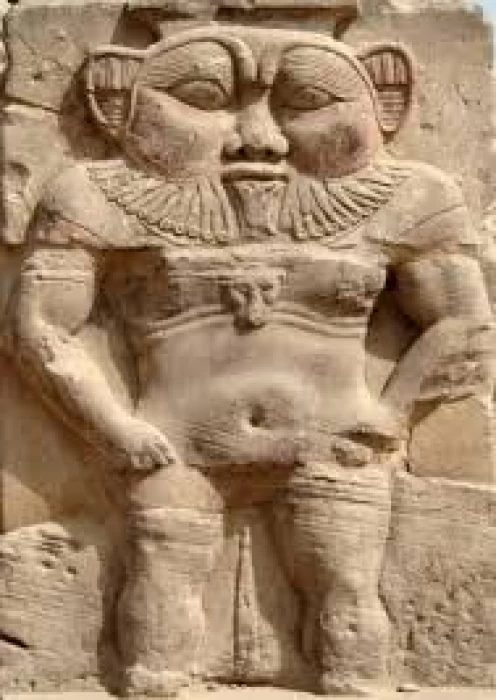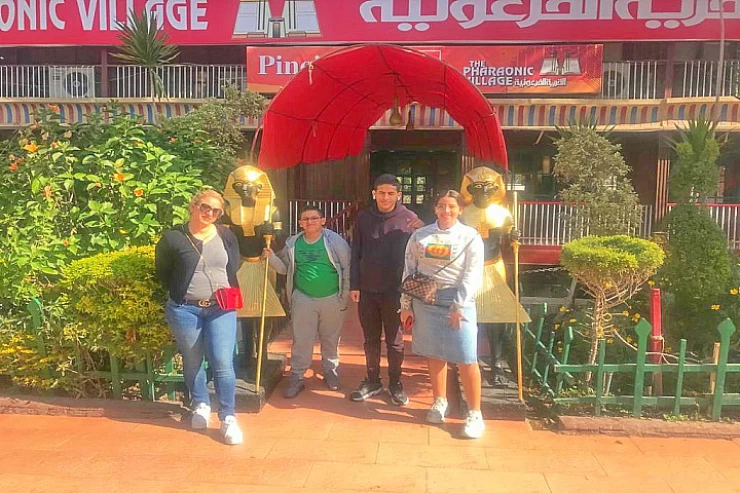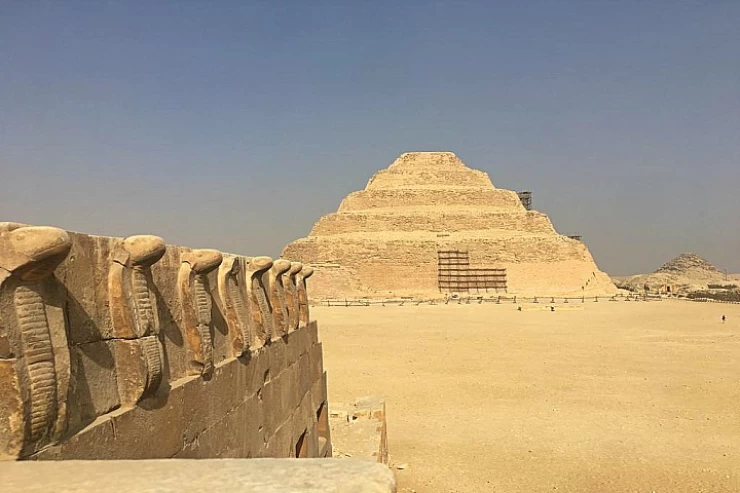
Deus Bes | Deus do Parto | Deus Antigo Anão Egípcio
Deus Bes
Deus Bes, é a única divindade representada exclusivamente em perspectiva frontal, pertenceu a uma das divindades menores do antigo Egipto mais admiráveis para a imaginação popular dos antigos egípcios.
Deus do Parto
Bes, uma divindade com características demoníacas, é estranhamente uma divindade familiar. Bes era um protector do lar e das crianças, particularmente ligado à fase crítica do nascimento e à defesa contra animais nocivos. Este aspecto era provavelmente o mais antigo. A esfera natural de acção do deus Bes espalhou a sua imagem sobre uma vasta gama de objectos da vida quotidiana dos antigos egípcios, desde os encostos de cabeça, nos quais vigiava o sono dos adormecidos indefesos, até aos objectos de cuidados pessoais.
As relações de Bes com a dança e a música eram também muito próximas, com as quais ele aliviava as deusas zangadas. As ligações com o ciclo solar indicam-na como uma forma popular do deus solar.
Bes é um antigo deus fada egípcio, um ser composto, tanto divindade como guerreiro satânico. Ele era um deus da guerra, mas também um protector da entrega de crianças e do lar, e estava ligado ao desejo, entretenimento, música, e dança. Embora o seu papel originalmente pareça ter sido o de guarda do faraó, tornou-se cada vez mais famoso junto de pessoas comuns, porque protegia essencialmente mulheres e crianças. Não tinha um culto certo, pelo que nenhum templo ou padre foi determinado em seu nome. No entanto, ele era um dos mais familiares dos antigos egípcios e era normalmente representado em artigos domésticos.
O Egipto acolhe-o com o seu poderoso Nilo ao longo do vale do Nilo, uma vez que irá explorar a excursão de Luxor a leste e à margem ocidental. e monumentos maravilhosos com o Cairo Top Tours, que está pronto a oferecer aos nossos convidados, as melhores viagens no Egipto e itinerários egípcios para descobrir a maioria das coisas importantes a fazer no Cairo, a maioria dos visitantes fará uma linha directa aos mais famosos pontos turísticos da Grande Pirâmide de Khufu, aventureiros, mochileiros e bloggers de viagens poderão juntar-se a uma das nossas excursões orçamentais ao Egipto atravessando o Deserto do Sara, como as excursões de Siwa a partir do Cairo, por exemplo, ou de preferência as excursões ao Deserto Branco do Egipto
Gostaria de viver uma viagem através da cultura e mitologia egípcias antigas? pode fazê-lo acontecer e passar um dia a visitar Abydos, Giza, Luxor, Assuão para ver os túmulos dos faraós adornados com cenas muito claras, detalhadas e belamente pintadas das várias divindades do antigo Egipto, bem como muitos outros locais, cidades, aventuras e coisas para fazer no Cairo, pode tentar reservar um dos nossos pacotes de excursões ao Egipto e pacotes de viagens ao Egipto muitos grupos privados de excursões de um dia no Cairo a partir do aeroporto e Passeios de um dia no Egito para explorar a capital do Egipto, Cairo pode consultar muitos dos nossos itinerários de excursões ao Egipto ou fazer uma das nossas excursões de um dia no Luxor ou excursões de um dia no Cairo como
God Bes, is the only divinity represented exclusively in frontal perspective, it belonged to one of the minor deities in ancient Egypt most admirable to the popular imagination of the ancient Egyptians.
Bes, a divinity with demonic characteristics, is strangely a family divinity. Bes was a protector of the home and children, particularly linked to the critical phase of birth and the defense against harmful animals. This aspect was probably the most ancient. The natural sphere of action of the god Bes spread his image on a wide range of objects of the daily life of the ancient Egyptians from the headrests, in which he watched over the sleep of the helpless sleepers, to the personal care objects.
Bes's relations with dance and music were also very close, with which he relieved the angry goddesses. Connections with the solar cycle indicate it as a popular form of the solar god.
Bes is an ancient Egyptian fairy god, a composite being, both deity and satanic warrior. He was a god of war, but also a protector of childbirth and the home, and was associated with desire, entertainment, music, and dancing. Although his role originally appears to have been the pharaoh's guard, he increasingly became very famous among common people because he essentially protected women and children. He had no certain cult, so no temples or priests were established in his name. However, he was one of the most familiar of ancient Egyptians and was usually represented on household items.
The god "Bes" reflects an aspect of the ancient Egyptians' interest in fun and humor as a means of entertaining themselves in their daily lives, which were full of hard work and hardship.
The god "Bes" is the ancient Egyptian god of humor and fun. The ancient Egyptians chose for this god, humor, a form that provoked laughter and ridicule, as they formed him as a small dwarf with a full face and muscles, with his tongue sticking out of his mouth, combining the form of a human and a monkey, and his role was to bring joy to the king and the entourage in the royal councils
He only provided protection from danger, while at the same time warding off harm, and was able by his power to prevent evil according to the beliefs of the ancient Egyptians.
In critical circumstances he also appeased nature as told in the famous solar eye legend, when he stopped the wrath of the bloodthirsty goddess Hathor and offered her an alcoholic drink, with a plant-based drug added.
In a more specific field, it brought joy and had a certain regenerative importance that contributed to the achievement and happiness of family life in all aspects of procreation, from masculinity through fertility, to birth and growth. Protecting life and family also includes the healing powers of God only, both in terms of medical healing and magical purification.
The cult of Bes and the rituals surrounding its complex spiritual nature centered on different categories of ritual objects, maintaining certain stereotypical features with stylistic changes over several centuries.
Among these things, so-called vases played a major role. These vases are a class of ceramic vessels decorated with a doll or head, which spread in Egypt from the New Kingdom (16th to 11th centuries BC) to the Hellenistic or Ptolemaic era (330-30 BC) and the periods of the Roman Empire (30 BC). BC – 476 AD), when production peaked.
















